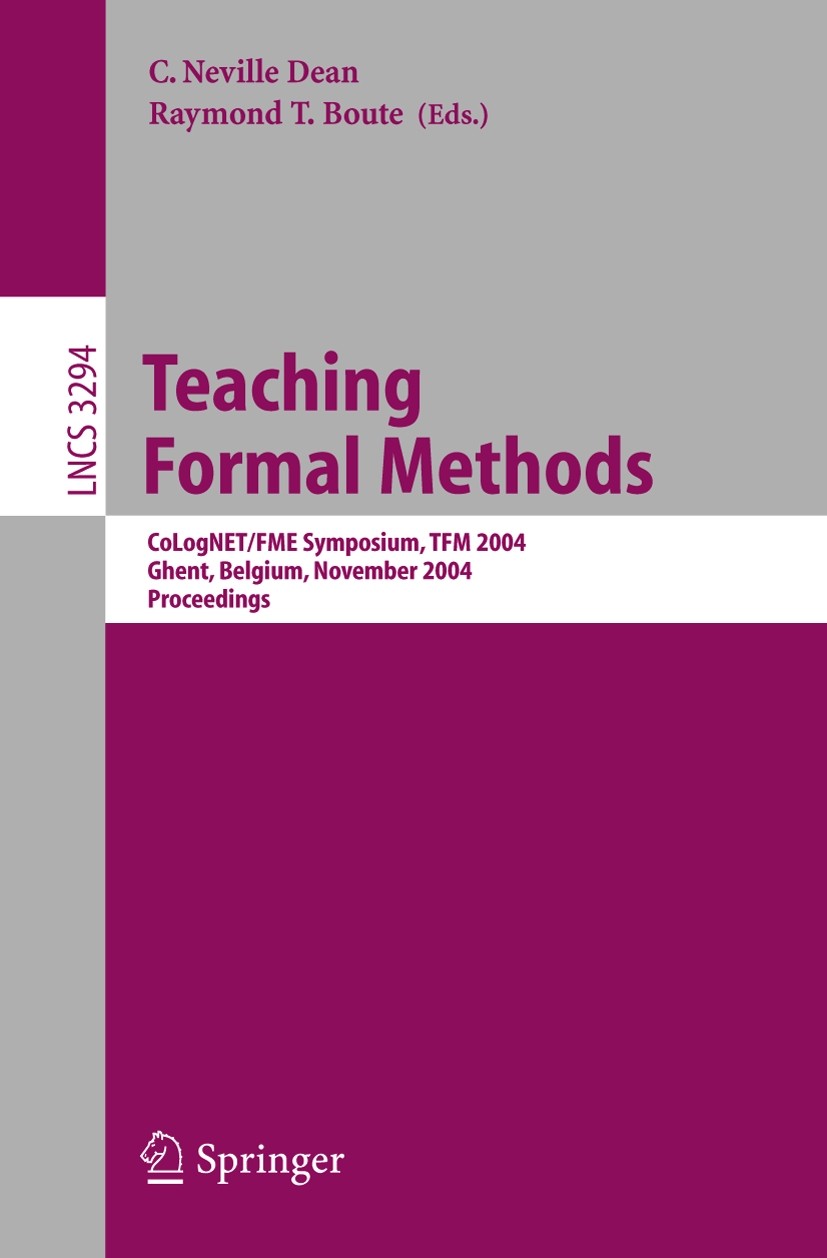| 书目名称 | Teaching Formal Methods |
| 副标题 | CoLogNET/FME Symposi |
| 编辑 | C. Neville Dean,Raymond T. Boute |
| 视频video | http://file.papertrans.cn/902/901138/901138.mp4 |
| 概述 | Includes supplementary material: |
| 丛书名称 | Lecture Notes in Computer Science |
| 图书封面 |  |
| 描述 | “Professional engineers can often be distinguished from other designers by the engineers’ ability to use mathematical models to describe and 1 analyze their products.” This observation by Parnas describes the de facto professional standards in all classical engineering disciplines (civil, mechanical, electrical, etc.). Unf- tunately, it is in sharp contrast with current (industrial) practice in software design, where mathematical models are hardly used at all, even by those who, 2 in Holloway’s words “aspire to be engineers.” The rare exceptions are certain critical applications, where mathematical techniques are used under the general name formal methods. Yet,thesamecharacteristicsthatmakeformalmethodsanecessityincritical applicationsmakethemalsoadvantageousineverydaysoftwaredesignatvarious levels from design e?ciency to software quality. Why, then, is education failing with respect to formal methods? – failing to convince students, academics and practitioners alike that formal methods are truly pragmatic; – failing to overcome a phobia of formality and mathematics; – failing to provide students with the basic skills and understanding required toadoptamoremathematicalandlogicalapp |
| 出版日期 | Conference proceedings 2004 |
| 关键词 | Eiffel; algorithems design; algorithmics; algorithms; calculus; computer science education; formal method; |
| 版次 | 1 |
| doi | https://doi.org/10.1007/b102075 |
| isbn_softcover | 978-3-540-23611-5 |
| isbn_ebook | 978-3-540-30472-2Series ISSN 0302-9743 Series E-ISSN 1611-3349 |
| issn_series | 0302-9743 |
| copyright | Springer-Verlag Berlin Heidelberg 2004 |
 |Archiver|手机版|小黑屋|
派博传思国际
( 京公网安备110108008328)
GMT+8, 2025-11-14 02:05
|Archiver|手机版|小黑屋|
派博传思国际
( 京公网安备110108008328)
GMT+8, 2025-11-14 02:05


